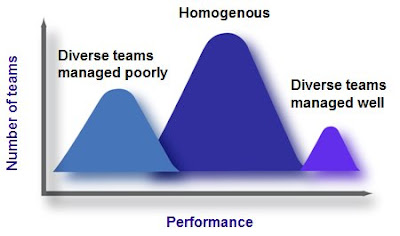From base camp in Nepal, explorers aiming for the peak of Everest must first cross the Khumbu Icefall. The crossing requires many resources to be brought together, some personal and some organisational. Ladders, crampons and guides complement vision, experience and courage.
My sense is that in the field of inclusion and diversity many organizations and individual practitioners are struggling to get beyond base camp onto higher slopes. Of course, being at base camp is in itself something to celebrate. People are paying attention, capabilities are increasing and some results are flowing. But, in order to have a dramatic impact on organizational and personal success we have to move higher.
What then are some of the resources needed for ascending the diversity and inclusion slopes? A few come quickly to mind. I suggest we may need them to be available on the mountain.
Nexus for Knowledge and Needs
A tremendous amount of academic research is undertaken with important implications for inclusion and diversity practice. Many of us don’t have the time to review, filter and pack all the nuggets into our rucksacks. Neither can we sustain active connections with many of the thought leaders in the field to influence their direction. I believe real value would flow from creating and resourcing an active nexus connecting the organizational and academic worlds.
Learning Opportunities
If we are honest, a lot of inclusion and diversity practitioners are ‘enthusiastic amateurs’. Many come from business backgrounds. While that perspective is on one hand a great asset, it is also a potential limitation. I was fortunate to learn from gifted mentors and then picked up more knowledge on-the-job. However, a practical curriculum of learning related to inclusion, diversity and organisational development would be valuable to many amateurs – even ‘gifted’ ones.
Business Language and ToolsMost organizations have chosen performance assessment and measurement systems. They create a language and tools with which many leaders and employees are familiar. To illuminate the strong connections between diversity, inclusion and performance it makes sense to use the common business language. We should take the time to convert the value proposition for diversity and inclusion into our local languages of performance.
Peer ChallengeEvery diversity leader I interact with could spend their working lives responding to benchmarking requests. How many of those ‘opportunities’ would really drive improvement in our performance? In my view the answer is very few. We need to look for a whole new level of mutual challenge over diversity and inclusion performance.
Rose Tint Removal KitAs key advocates for diversity and inclusion, practitioners can at times be their own worst enemies. If balanced advocacy turns to what is perceived as zealotry, we lose credibility among the stakeholders. We have to be ready to raise and discuss the real challenges as well as the benefits that diversity creates. When that honesty is part of our process I feel better about our credibility and our platform for change.
Accredited ConsultantsMore and more consultants see diversity and inclusion as a money making proposition. That’s true both for people with and sadly those without the capability to serve clients effectively. In Europe, where attention to diversity and inclusion is increasing particularly rapidly, there are relatively few world-class consultants. We would benefit from some form of accreditation that separates the genuinely knowledgeable from the opportunists.
With these and many other personal and organisational resources we can get out of base camp and head a lot higher. Pack up – let’s go!






